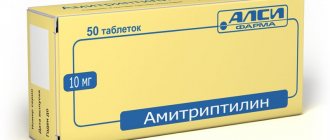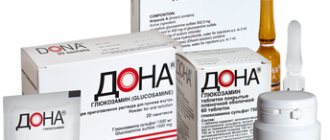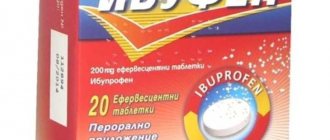Cyclophosphan
During the treatment period, it is necessary to carefully monitor the patient's condition due to the possibility of toxic effects in any of the following conditions: leukopenia, thrombocytopenia, bone marrow infiltration by tumor cells, previous radiation or chemotherapy, renal/liver failure.
Cyclophosphamide may increase anticoagulant activity as a result of decreased hepatic synthesis of coagulation factors and impaired platelet formation, as well as through an unknown mechanism.
During treatment, it is necessary to systematically monitor peripheral blood (during the main course - 2 times/week; during maintenance treatment - 1 time/week). When the number of leukocytes decreases to 2500/μl and platelets to 100,000/μl, treatment should be stopped.
During therapy, it is necessary to monitor the activity of liver transaminases and lactate dehydrogenase, bilirubin content, the concentration of uric acid in the blood plasma, diuresis, specific gravity of urine, and it is also necessary to conduct tests to detect microhematuria.
During treatment, it is necessary to regularly test urine for the presence of erythrocyturia, which may precede the development of hemorrhagic cystitis. If symptoms of cystitis with micro- or macrohematuria appear, treatment with the drug should be discontinued.
To prevent hemorrhagic cystitis, it is advisable to drink plenty of fluids and use the drug mesna.
If infections occur during cyclophosphamide therapy, treatment should be interrupted or the dose of the drug should be reduced.
Women and men should use reliable methods of contraception during treatment.
When prescribing cyclophosphamide during the first 10 days after surgery using general anesthesia, the anesthesiologist must be notified.
After adrenalectomy, it is necessary to adjust the doses of both glucocorticosteroids (as replacement therapy) and cyclophosphamide.
According to the electrocardiogram and echocardiogram, in patients who suffered episodes of cardiotoxic effects of high doses of cyclophosphamide, no residual effects on the state of the myocardium were detected.
In girls, as a result of treatment with cyclophosphamide in the prepubertal period, secondary sexual characteristics developed normally; menstruation was normal, and they were subsequently able to conceive.
Sexual desire and potency in men are not impaired. In boys, during treatment with the drug in the prepubertal period, secondary sexual characteristics developed normally, however, oligo- or azoospermia and increased secretion of gonadotropins may be observed.
During the treatment period, it is necessary to refrain from taking ethanol, as well as from eating grapefruit (including juice).
After previous treatment with the drug, secondary malignant tumors may occur, most often these are bladder tumors (usually in patients with a history of hemorrhagic cystitis), myelo- or lymphoproliferative diseases. Secondary tumors most often developed in patients as a result of treatment of primary myeloproliferative malignant or non-malignant diseases with impaired immune processes. In some cases, secondary tumors develop several years after stopping drug treatment.
Pharmacodynamics
Thanks to Cyclophosphamide, it is possible to have a powerful antitumor effect on the body. In addition, the active components of the drug help improve the body's immune abilities. This can be achieved due to the inactive transport form.
Under the action of phosphatase, they decompose, forming a specific active component. They attack the internal cells of malignant tumors, promoting the destruction of their DNA and RNA. In addition, it is possible to stop their mitotic division.
After cyclophosphamide is injected into a vein, the maximum concentration of active substances occurs after 2-3 hours. Moreover, on the first day after reaching this parameter, it rapidly decreases.
The bioavailability of the drug is 90%. The active components rapidly spread throughout the body, they settle in all internal organs. The half-life is on average 7 hours, if there are pathologies of the liver and kidneys - this parameter can be increased.
Indications for use
Cyclophosphamide is a drug with multiple effects. Typically, this drug is prescribed to treat the following conditions:
- Neuroblastomas and retinoblastomas;
- Multiple myeloma;
- Mycosis fungoides;
- Chronic or acute lymphoblastic leukemia;
- Non-Hodgkin's lymphoma;
- Breast or ovarian cancer.
In addition, Cyclophosphamide is used as a combination therapy. It is successfully prescribed together with other antitumor drugs. This medicine is often taken for progressive autoimmune diseases, as well as for more successful engraftment of transplanted internal organs.
pharmachologic effect
Alkylating cytostatic agent.
Mustard gas is close in chemical composition to nitrogen analogues of the compound. The mechanism of action of Cyclophosphamide is explained by the formation of cross-links directly between the strands of RNA and DNA, as well as the process of inhibition of protein synthesis. Once in the body, it tends to disintegrate into tumor cells. Cyclophosphamide blocks mitotic division and destroys the nucleophilic centers of protein molecules.
It has a broad antitumor effect and has a milder effect on thrombocytopoiesis. It is used in chemotherapy and is quite effective in the treatment of cancer.
Side effects
Cyclophosphamide is a drug that often causes side effects. This is due to its powerful action.
Often taking the drug causes the following side effects:
- Nausea, vomiting, pain in the stomach;
- Decrease in platelet and leukocyte levels;
- Itching, redness of the skin, change in nail color, alopecia;
- Cardiotoxicity, heart failure;
- Interstitial pulmonary fibrosis;
- Impaired spermatogenesis, amenorrhea;
- Urticaria, anaphylactic shock;
- Facial redness, increased sweating, secondary neoplasms.
Reviews
Marina, 48 years old “Several years ago I was diagnosed with mycosis fungoides. I was immediately prescribed another medicine, but it did not work for me - serious side effects arose. Cyclophosphamide helped me cope with this condition. Over two months of constant use, the size of the tumor decreased significantly. In addition, I began to feel much better."
Igor, 29 years old “I can’t understand at what point I was diagnosed with chronic leukemia. I underwent multiple studies, after which I was prescribed Cyclophosphamide therapy. I took it for a long time, several months. During this period, it was possible to put the disease into remission. Once a year I am prescribed a prophylactic dose of this medication. Of course, during therapy I have some discomfort, but everything is quite tolerable.”
Contraindications for use
Cyclophosphamide is a fairly powerful drug that has a fairly wide range of limitations. Taking the drug in this case is strictly prohibited.
Contraindications include the following indications:
- Hypersensitivity and individual intolerance to components;
- Severe bone marrow disorders;
- Cystitis;
- Urinary retention;
- Active infectious processes.
Cyclophosphamide is contraindicated during pregnancy and breastfeeding.
If therapy with this drug is vital, then the pregnancy is terminated in the first three months. If a woman has a longer period, then she is notified of the presence of a teratogenic effect.
The active components of Cyclophosphamide rapidly penetrate into breast milk and into the baby’s body. For the treatment of children, the current dose of the drug is reduced. Be sure to read the safety instructions before starting treatment.
Instructions for use
Cyclophosphamide is a drug produced in the form of a white powder. It is intended for intravenous, intramuscular use, and is also placed in the oral cavity. Typically, the drug is used at a dose of 200 or 400 mg every other day orally.
Keep in mind that the course dose for all indications is 6-14 grams. Therapy takes about 2-3 weeks daily or every other day. If fluid has accumulated in the abdominal cavity due to a malignant neoplasm, then Cyclophosphamide is additionally administered into the oral cavity.
Internal administration provides maximum convenience if drug therapy is long-term. Cyclophosphamide has a powerful immunosuppressive effect. The drug acts mainly on lymphocytes. It is because of this that the powder is advisable to use for the treatment of lupus erythematosus, nonspecific aortoarteritis and rheumatoid arthritis.
Overdose
When consuming a large dose of Cyclophosphamide, an overdose of the active substance occurs. To prevent such consequences, you must follow all precautions. Also, do not forget about the recommendations that your doctor gave you.
Please note that Cyclophosphamide does not have an antidote. To stop pathological changes, the patient is indicated for hemodialysis - a blood purification procedure. Gastric lavage has no therapeutic value.
Keep in mind that after an overdose of Cyclophosphamide, the patient experiences suppression of bone marrow functionality. Leukocytopenia often occurs against this background. The extent of the pathological process depends on the severity of the overdose.
To prevent serious complications, it is worth checking the chemical composition of the blood in a timely manner. It is also necessary to do everything possible to prevent the development of neutropenia - constant prevention of infections is required.
For a more positive effect on the body, constant prevention of cystitis is required.
Drug interactions
Due to the fact that Cyclophosphamide has a powerful effect on the body, it is worth adhering to a number of specific measures. They will help prevent dangerous consequences from occurring.
Please remember the following:
- Cyclophosphamide significantly increases the activity of hypoglycemic drugs;
- When cyclophosphamide and allopurinol are taken simultaneously, more pronounced myelodepression occurs;
- If you take this medicine together with colchicine, probenecid, sulfinpyrazone, it is necessary to adjust the dose of anti-gout medications;
- If you take uricosuric anti-gout medications, the likelihood of developing nephropathy significantly increases;
- Rubromycin and Adriamycin significantly increase their cardiotoxicity during such therapy;
- Concomitant therapy with cytarabine and cyclophosphamide can lead to cardiomyopathy and even death;
- If Cyclophosphamide is taken together with lovastatin, acute necrosis of skeletal muscles and acute renal failure may occur;
- Chlorpromazine and tricyclic antidepressants significantly increase the effect of the drug;
- There is a potential for additive suppression of bone marrow function during radiation therapy.







